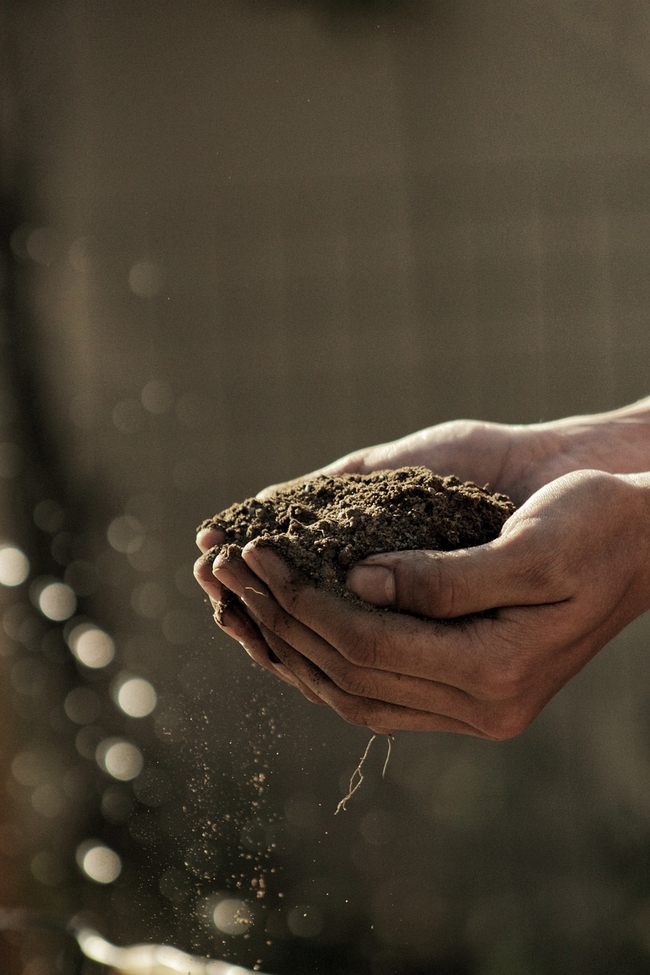- Author: Penny Pawl, UC Master Gardener of Napa County
I love propagating plants and I have used several methods with success. As I walk around my garden, I can see the results of this pastime. Some of my propagating efforts have grown into full-size plants.
When I am pruning, I often save some of the pruned parts and attempt to make new plants through a process known as vegetative propagation.
My first attempts at this method were under the guidance of John Hoffman, a retired Napa arborist who was among the first certified Napa County Master Gardeners. John told me to take cuttings of the plants I wanted to reproduce and plant them in a mixture of half sharp sand and half pumice or perlite. This mixture drains well but stays damp, so cuttings don't dry out.
This method can take a while depending on the type of plant. I have on occasion put a large bottle over the top of the pot to retain moisture.
Many people dip the cut end of the plant in rooting hormone to help with rooting. I have found that step unnecessary. When I can tug gently on the cutting and feel some resistance, it has probably rooted and is ready for potting in well-drained soil and its new life. Not every cutting will root, in my experience. I can treat two identical cuttings the same, yet one will fail, and one will root.
I reuse the sand-pumice mixture and have cuttings going in and out over time. I keep these pots filled with starting mixture in the greenhouse during winter and in a shady spot during summer.
Many plants are patented. If they are reproduced vegetatively and sold, the patent holder is entitled to payment.
This is not a concern for me as I give away my extras.
Another propagation method I like is via root cuttings, which works well on elms and maples. When pruning plant roots, take a piece of live root that has tiny feeder roots and plant it in the rooting medium cut side up so that the feeder roots are buried. The new growth will emerge from the cut end. If you inadvertently plant the wrong side up, you will likely have a failure. In time, the cut end will sprout new leaves and more roots, and you will have another plant ready to pot up.
Air layering also works for propagation, although it takes a lot more time. It is most suitable for hardwood bushes or trees. I have seen it used in Japan on large pine trees. I successfully propagated a Japanese maple via air layering in 1994 and it is still growing well. The trunk was about 3 inches in diameter when I air-layered it and now it is a full-size tree.
To succeed with air layering, you need to pay attention to proper technique. It's difficult to describe the method but you can find good videos and websites to guide you. This site clearly explains how to use air layering to propagate a fruit tree.
A few years ago, while reading about propagation, I learned about the plant propagation machines known as cloners. I now own three and two are full of cuttings all the time. I have done both hardwood and softwood cuttings in the cloners, which rely on hydroponics, continually washing the stems of the cuttings with water. The cloner comes with a small pump, and I check these pumps daily to make sure nothing is plugging them.
It is amazing how quickly the softwood cuttings root. I once put a germanium in the cloner and left home for two weeks. When I returned the plant had enough roots to go into its own pot. Using a cloner, I have had success propagating elms, maples, milkweed, verbascum, salvias and many other plants.
To take a cutting for propagation, I look for new tip growth. I cut a piece 10 to 12 inches long, measured from the cut to the growing tip, and strip off the bottom leaves. I make the cut on the diagonal to expose as much of the green cambium layer as possible. Usually the new roots push from that part. However, on some plants, roots emerge from the stem where leaves were removed. If new leaves push from the stem, I remove them.
There are other propagation methods that I don't use. One practice involves bending a stem (or branch) of the plant to the ground and then topping the stem with soil. Given time and good conditions, this stem will develop roots and can then be separated from the mother plant.
What do I do with all the plants I propagate? Many go into the ground, some into pots and others I happily give to friends.
Workshop: Join UC Master Gardeners of Napa County for “Succulent/Dry Garden: Double Your Pleasure - Double Your Fun” on Saturday, July 27, from 10 am to noon, at Las Flores Learning Garden, 4300 Linda Vista Avenue, Napa. Do you know the five most common ways succulents reproduce? Learn their secrets and how you can increase your plant collection or add to your low-water landscape through succulent plant propagation. Register here.
Library Talk: Join UC Master Gardeners of Napa County and Napa County Library for a talk on “Fabulous Ferns, Indoors and Out “ on Thursday, August 1, from 7 pm to 8 pm via Zoom. Ferns are an accommodating family of plants ranging in size from tiny to behemoth. Some species grow in air and others in water, as well as in just about any type of soil. Enjoy an overview of these remarkable plants and find the perfect one for your space. Register to receive the Zoom link.
Help Desk: The Master Gardener Help Desk is available to answer your garden questions on Mondays and Fridays from 10 am until 1 pm at the University of California Cooperative Extension Office, 1710 Soscol Avenue, Suite 4, Napa. Or send your questions to mastergardeners@countyofnapa.org. Include your name, address, phone number and a brief description.
Become a Master Gardener Volunteer: UC Master Gardeners of Napa County is now accepting applications for the Class of 2025. Visit napamg.ucanr.edu to read the informational brochure, then register to attend a mandatory information session for applicants. Application deadline is 5 pm on September 25.
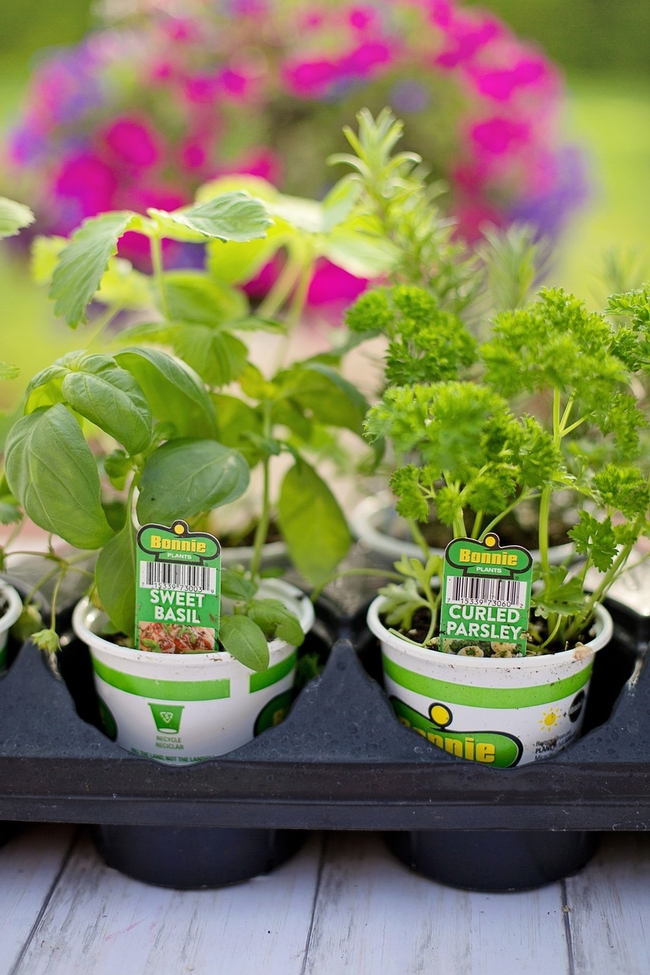
- Author: Dr. Bob Niklewicz, PT, DHSc, UC Master Gardener of Napa Valley
One of the great pleasures of gardening is the reward and satisfaction of walking among your plants and seeing the unique way you have displayed your horticultural talents. A garden is a gift you give to yourself as well as to all those who take the time to appreciate your handiwork.
Working in the garden is an excellent way to stretch your muscles and get some exercise. It is both physical and mental therapy. As sore as your muscles may become, the benefits are worth it. Take short breaks from your garden work, admire your plants, and then, recharged, continue. When you are finished for the day, you have earned a rest. Put your tools down, put your feet up, and enjoy a beverage of your choice.
Walking is also an important way to stay healthy, and walking in your garden is a pleasure. The human body has about six hundred muscles, and between 25,000 to 600,000 miles of blood vessels. The hardest working muscle is your heart. All the other muscles work as needed, but your heart beats and contracts about 100,000 times a day.
Every time you take a step, reach, bend, or just smile, muscles will contract, then relax when the task is done. Your heart is constantly pumping for a healthy circulation. Think of your muscles as auxiliary pumps to transport blood. By having them do a lot of the work, they lessen the stress on the heart. With every muscle contraction, especially in a steady rhythmic way such as walking, you move fresh blood in and waste out of your tissues. Muscles move more blood as you walk and improve your fitness. It's a win-win situation.
As the Chinese philosopher Laozi said, “A journey of a thousand miles starts with a single step.” So how do you start the journey? Always start by warming up. A slow steady walk may be al yu nee. My rule of thumb is: If you are wearing a sweatshirt with a zipper, when you feel the warm “glow” and you sense the need to pull down the zipper, you are warmed up. Walking around your yard several times should do nicely. Comfortable shoes are a must. Take your cup of coffee with you if the ground is flat. However, if you have uneven areas in your yard, consider a walking stick for balance.
Walk at a pace that is not stressful. Enjoy the view. You should swing your arms even if you are using a stick: right hand forward when the left foot steps forward. If you really want to check your progress, learn to take your pulse—or let your smart watch do it. The target heart rate for conditioning is 100 beats per minute. If you just want to warm up, go for the “glow.”
Gardens are also great promoters of mental health. Even just a few minutes a day in your garden can reduce stress. Gardening allows the experience of “Zen” as you spend time being part of your yard. As you manipulate plants and their placement, they become a vehicle for you to travel methodically through the soil and find that place that suits you as well as them. That in turn gives you an intuitive satisfaction as to their place in your space and time. Your work around other plants, removing rocks, and weeds, to give you a creative calm and satisfaction in that moment. When you sit back and look at your work, you like what you see and how you feel.
Many people compare activity in the garden as a type of meditation, which is a journey from external activity to inner silence. For most of your life, you may be busy doing things. The operative word is “doing.” When you guide yourself into a meditative state, that gives you the opportunity to just “be,” nothing more, nothing less. You are just there in your own peaceful world. To paraphrase Deepak Chopra, MD, you remember you are a human BEING, not a human DOING.
We usually work in the garden until we are done (seldom, in my case). To get back some of the energy that you have put into your garden, try doing nothing. All you have to do is “be.” I challenge you to stop earlier in the earlier in the day—or even take some time at the beginning of the day—to appreciate the gift you gave yourself by having a garden with the relaxation that is hidden there.
Become a Master Gardener Volunteer! U.C. Master Gardeners of Napa County is now accepting applications for the class of 2025. Visit us at napamg.ucanr/edu to read the informational brochure and register to attend a mandatory information session for applicants. Applications are due September 25, 2024, at 5:00 pm.
Workshop: Join the UC Master Gardeners for a workshop on “Get Your Hands Dirty in the Pollinator Garden” on Saturday, June 29, from 10am to 12 pm, at Las Flores Community Center, 4300 Linda Vista Ave., Napa.
Help Desk: The Master Gardener Help Desk is available to answer your garden questions on Mondays and Fridays from 10 am until 1 pm at the University of California Cooperative Extension Office, 1710 Soscol Ave., Suite 4, Napa. Or send your questions to mastergardeners@countyofnapa.org. Include your name, address, phone number, and a brief description.
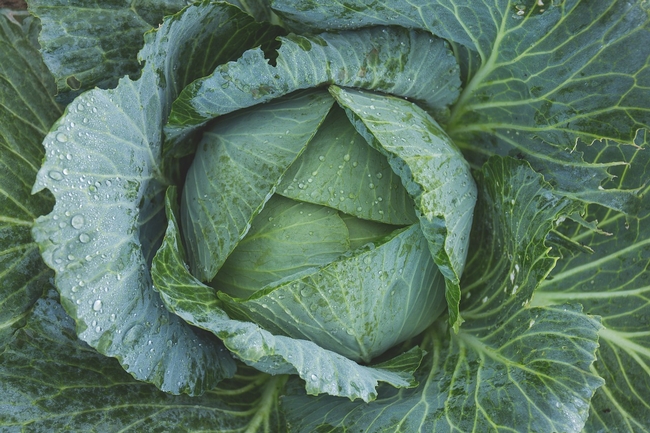
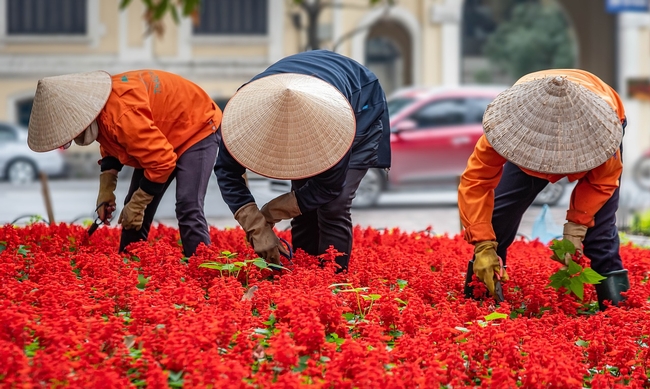
- Author: Cindy Watter, Master Gardener of Napa County
One of the pleasures of being a UC Master Gardener is our monthly seminars. Not only are they varied and interesting, but it is always a pleasure when the local members are present. I enjoy being reminded of how smart my colleagues are. A few months ago, Natasha Mantle gave a talk on California native bees. Her presentation was so interesting I was inspired to learn more about our natives, and why they are so important.
The native bee is a more efficient pollinator than the honeybee (which is not native, but a European import). Natives are active in cold or wet conditions. Natives are more thorough pollinators. Their foraging territory is broader, and they are both generalists and specialists in their foraging—some bees seek out particular plants, and others pollinate all plants. They also teach honeybees how to be more effective pollinators.
Natasha told us about ten California native bees. They are mason/blue orchard bee, leafcutter bee, carpenter bee, yellow nosed bumblebee, squash bee, urban digger bee, long horned bee, sweat bee, and ultra green sweat bee.
The leafcutter bee has sharp mandibles so it can chew leaves and construct nests with leaf pulp. Female mason bees build nests in holes in wood. They also use mud to plug the holes in their nests. The blue orchard bee is particularly useful in pollinating almond trees.
The carpenter bee is fascinating to me. Truth to tell, the variety in my yard is so large it is the easiest variety of bee for me to see, as I am nearsighted and not particularly stealthy. I often observe shiny inch-long black carpenter bees with beautiful transparent purple wings crawling over the passionflower and salvia in my yard. They chew on soft wood to form holes for nests. While some eastern carpenter bees may attack the built environment, western varieties prefer to nest in flowering plant stalks, such as agave. The females build the nests, which are complicated structures. Nest tunnels are built with sawdust in a spiral pattern. I haven't found any yet in my yard, but I am still hunting.
Sweat bees are named after one of their attractants, human sweat. They will walk on a person's arm, for example, lapping up sweat, until the host notices (they are quite small) and starts shrieking. Which leads me to stings. Bees do not want to sting you. I have only been stung once in my life, by a bee upon which I stepped, barefoot. Of course, if you are allergic to bee stings, you should be extra cautious anyway in your garden, wearing long sleeves and not running around shoeless.
Squash bees collect pollen from the Cucurbitaceae family, which includes squash and pumpkins. They prefer the pollen from those plants but will collect nectar from anywhere. The females make nests in the ground, but the males will sleep at night in a squash blossom.
Long horned bees are named after the long antennae on the males. The males like to sleep on flowers—you can sometimes see a group of them on a sunflower—while the females prefer to nest in a crack in the ground.
Digger bees are generalists, collecting pollen from native plants as well as other plants such as tomatoes. They, too, nest in the soil.
Bumble bees also nest underground in abandoned animal burrows. Their extremely loud buzz helps them extract pollen from difficult sites. You may ask, “Where are the beehives?”
Only 10% of bee species live in hives. Most bees are solitary and live in already existing structures, such as a hole in the ground. Note: UC Master Gardeners promote mulching, but if you want a good native bee habitat, leave some areas of your yard mulch free.
Natalie gave us some examples of plants that are attractive to native bees: ceanothus, gallardia, Frikart's aster, western redbud, Cascade Creek goldenrod, California poppy, nepeta, Germander sage, Russian sage, and Goodwin Creek lavender. These are perfect for a water-wise garden, too.
A few years ago, there was great concern that bees were dying off. The syndrome was called Colony Collapse Disorder--but it referred to honeybees, not native bees. Scientists studied the causes, which could be pathogens, pesticides or even stress. However, honeybees are a big business, and they are doing well now. It is native bees that are in greater danger, according to Steven Blackledge of Environment America. Natives are losing their habitat, as well as suffering from climate change and a landscape that is loaded with pesticides. Several states have restricted pesticide use, and the 2021 federal infrastructure bill authorized funding to promote pollinator-friendly plants along roadsides. That money has not yet been spent. However, millions of Americans are transforming their yards into pollinator habitats now—a good sign. Pollinator Week 2024 in June 17-24, so maybe you should, too.
Become a Master Gardener Volunteer! UC Master Gardeners of Napa County is now accepting applications for the class of 2025. Visit us at napamg.ucanr/edu to read the informational brochure and register to attend a mandatory information session for applicants. Applications are due September 25, 2024, at 5:00 pm.
Workshop: Join the UC Master Gardeners of Napa County for a workshop on “Get Your Hands Dirty in the Pollinator Garden” on Saturday, June 29, from 10 am to 12 pm, at the Las Flores Community Center, 4300 Linda Vista Ave., Napa.
Workshop: Join the UC Master Gardeners of Napa County for a workshop on “The Succulent /Dry Garden” at the Las Flores Community Center, 4300 Linda Vista Ave., Napa on Saturday, July 27, 2024 from 10 am to 12 pm
Help Desk: The Master Gardener Help Desk is available to answer your garden questions on Mondays and Fridays from 10 am until 1 pm at the University of California Cooperative Extension Office, 1710 Soscol Ave, Suite 4, Napa. Or send your questions to mastergardeers@countyofnapa.org. Include your name, address, phone number, and a brief description.
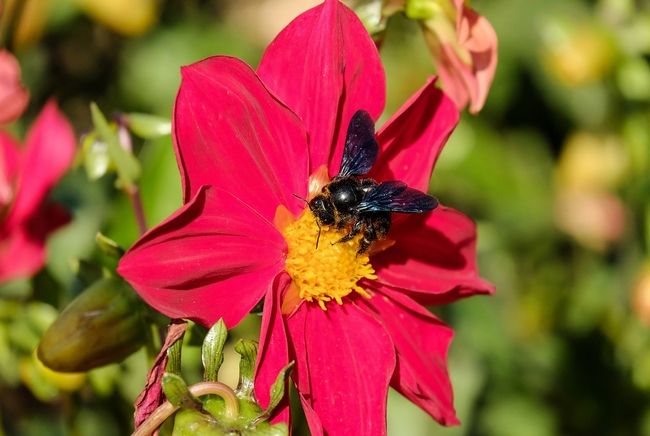
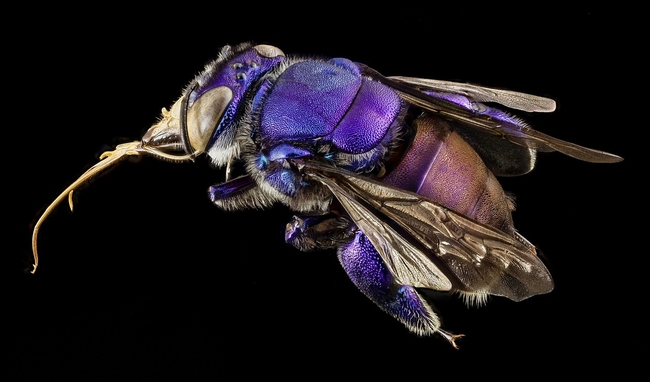
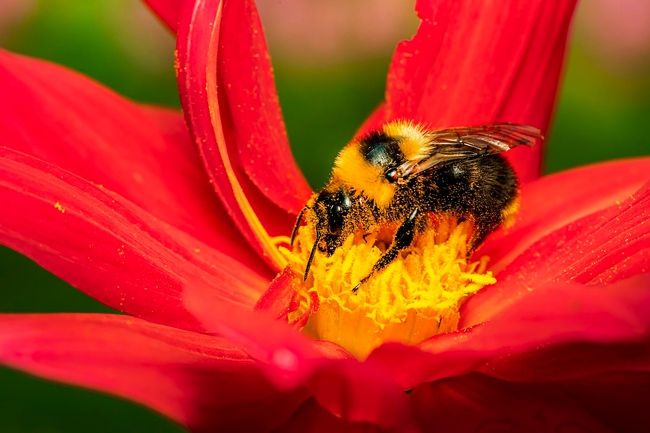
- Author: Drew Tomasyan, UC Master Gardener of Napa County
It is well known that the Napa has many vineyards. Wine is what made this area famous. But did you know that there is another remarkable collection of plants from all around the world right in downtown Napa? Fuller Park is home to dozens of varieties of trees, both native and extremely exotic. Some varieties are famous. For example, the distinctive Atlas cedar (Cedrus atlantica) has appeared in literature, as well as the George Harrison song “Beware of Darkness.” There are many other trees with colorful histories in Fuller Park.
One, the dawn redwood (Metasequoia glyptostroboides), is a prehistoric tree. It existed during the Cretaceous period, the time of the dinosaurs, and was thought to be extinct. However, a forester in China discovered what he thought was a new tree. A Chinese scientist, Dr. Hu Hsen-Hu, sent specimens to his mentor at Harvard, and he distributed the seeds all over the world. The Fuller Park dawn redwood tree's source is probably from a trip to China made in 1948 by a University of California paleontologist, Dr. Ralph Cheney, and a San Francisco Chronicle science writer, Dr. Milton Silverman. They returned with seeds to distribute, and the Fuller Park dawn redwood was born.
The Bunya bunya tree (Araucaria bidwillii) is near Seminary Street. You can recognize it by the little fence surrounding it, as well as its size, razor sharp leaves, and enormous cones. The fence is in response to the fear of a 15-pound seed cone falling on someone's head (which has never happened, by the way). The Bunya bunya is native to the southern hemisphere. The seeds inside the cones are much bigger than almonds and are a valued source of food for the New Zealand native people.
Fuller Park, named after Mayor C.H. Fuller, who was mayor at the time of its purchase in 1905, has evolved from farmland to sports fields to a family-oriented park with beautiful plantings. It is a wonderful place to picnic, meet with friends, or simply relax by the rose garden. Children climb on playground equipment or practice soccer. Neighbors walk their dogs around the perimeter, and the excited chatter of squirrels looking for acorns can be heard from every corner. However, unlike most parks, when Fuller Park was planted the idea was to create an arboretum of unusual and native tree specimens for the public to enjoy. This vision has become a reality over the years.
Little did the founders of Fuller Park realize that, over a century later, it would have so much more value than merely being aesthetically pleasing. This community forest, and others like it, benefits our planet and the people in so many ways. As the earth gets hotter due to changing climate, trees play a vital role in reducing the impacts of this change through the absorption of carbon, a major contributor to global warming. The more mature a tree, the more carbon it can store. For instance, a mature can absorb more than 48 pounds of carbon dioxide annually. This is the equivalent of driving 50 miles. Carbon remains in the tissues of a tree until it is burned or decomposes. Trees also filter out fine particulate matter and ozone from the air, reducing air pollution. In addition, they can soak up pollutants in soil, such as cadmium, chromium, and lead, so they purify the soil as well.
Mature trees create ecosystems in urban areas. They provide habitat and food for birds, mammals, and other plants. This, in turn, sustains biodiversity.
In cities, vast amounts of concrete and asphalt raise the temperature considerably. This is called the “heat island effect.” Shade provided by trees cools heat islands. Trees also use evapotranspiration, a process in which they absorb water through their roots and cool the surroundings by releasing water vapor through their leaves.
As our climate warms, storms become more frequent and severe. Rain hits the ground at higher speed when there is a lack of tree cover. A canopy of leaves and branches slows down the rain, allowing it to enter the soil, leading to more water storage in the soil and less run-off, thus mitigating flooding.
There is a social benefit to having trees in urban areas. They create public spaces where people can gather, increasing a sense of community. Spending time in green areas around trees can increase a sense of well-being. Trees are a natural barrier to noise pollution, leading to stress reduction and a calming effect.
City trees have an economic benefit, too. They can reduce energy costs by providing shade, thus reducing the need for air conditioning. Trees and green spaces can increase property values for homes and businesses. Planting and maintaining healthy trees create job opportunities.
If you would like to learn more about the park and its trees, the U.C. Master Gardeners of Napa County offer informative walking tours that explain the characteristics of these beautiful trees as well as the history of the park. Tree Walks are done at an easy pace and last 1.5 to 2 hours. There is no charge. They start at alternate Fridays and Sundays from April through October. The remaining dates this year are June 14, July 21, August 16, September 15, and October 18.
For more information, visit our website: http://ucanr..edu/sites/ucmgnapa.
Workshop: Join UC Master Gardeners of Napa County for a workshop on “Welcoming Pollinators into Your Garden” on Sunday, June 16, from 2 pm to 4 pm, at Yountville Community Center, 6516 Washington Street, Yountville. Learn about host plants and nectar plants and how to include them in your garden. This workshop is offered in partnership with Yountville Parks and Recreation Department. Register on their website. Click Adult Activities, then UC Master Gardeners, then Planting for Monarchs and Other Pollinators.
Workshop: Join UC Master Gardeners of Napa County for a workshop on “Get Your Hands Dirty in the Pollinator Garden” on Saturday, June 29, from 10 am to 12 pm, at Las Flores Community Center, 4300 Linda Vista Ave, Napa. Help Desk: The Master Gardener Help Desk is available to answer your garden questions on Mondays and Fridays from 10 am until 1 pm at the University of California Cooperative Extension Office, 1710 Soscol Avenue, Suite 4, Napa. Or send your questions to mastergardeners@countyofnapa.org. Include your name, address, phone number and a brief description.
Become a Master Gardener Volunteer! UC Master Gardeners of Napa County is now accepting applications for the class of 2025. Visit us at napamg.ucanr.edu to read the informational brochure and register to attend a mandatory information session for applicants. Applications are due September 25, 2024 at 5:00 pm.
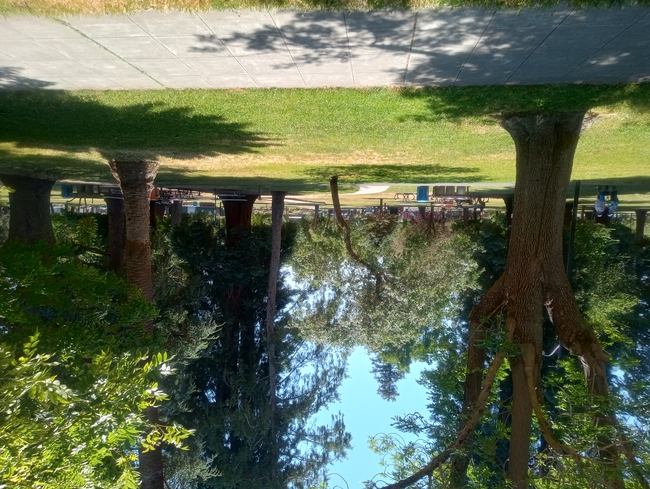
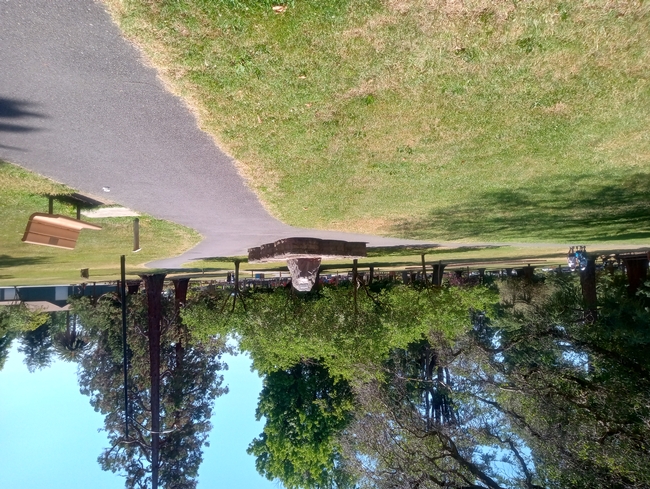
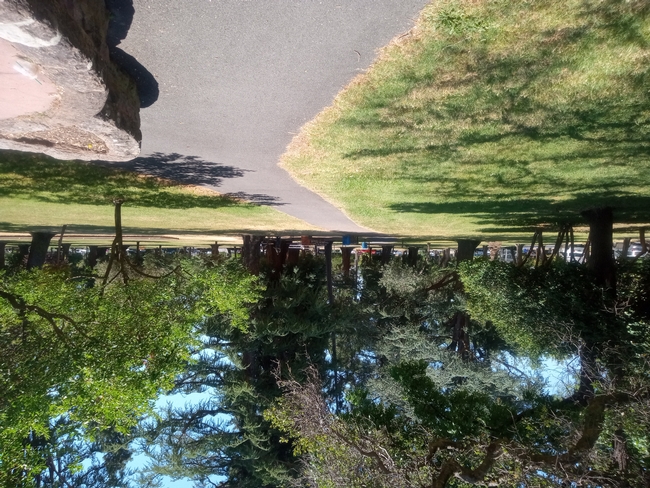
- Author: Penny Pawl, UC Master Gardener of Napa County
It's that time of year when lots of potting and repotting is going on. I was potting some seedlings a few days ago when I had started in seedling mix. Seedling mix is good for seedlings, because it is sterile, drains well and the seeds can readily make new roots. There is no fertilizer in this mix as the plants are just germinating and will be moved to a soil mixture within a short time
While I was potting up the seedlings from the starter mix, I noticed the type of soil that was in the bag I had purchased. It was an organic mix but did not appear to have small sharp stones in it. I have been working with bonsai for many years and all the soils used in bonsai have various sharp rocks and pebbles in them. This encourages the feeder roots to split and grow many rather than one or two main roots. In fact, I potted up a plant today from my old bonsai mix and it was mostly feeder roots.
When you repot a plant and then water, watch and make sure the water runs out the bottom. On occasion I have lifted a plant out of the pot after watering and only the top inch is moist.
The bonsai soils retain moisture but drains all the standing water out of the soil. These soils seem to stay damp longer than some of the plants I have purchased over the years which are planted in a mixture that is heavily into peat moss. When the soil containing peat moss dries out, it has to be soaked in water to become moist again.
The recipes for bonsai soils depend on the plant that is going to be planted. Some like junipers and pines are planted into completely soilless mixes with just small stones, pumice, a stone called Akadama which comes from Japan, and perhaps compost. Maples and other deciduous trees need a mixture that contains more compost. All these mixtures need fertilizers and I mostly use worm compost on top which contains all the nutrients plants need.
Akadama is a product from the volcanoes of Japan and is praised for its ability to help soils retain moisture while also draining excess water. It is rather expensive so I would not recommend it for ordinary potting soil. But you can purchase pumice or red lava rock and add them to your potting soil to get better water flow.
Because of the value of the products in these soils I do not discard them. I dry them in the summer in my hot house and store them in a garbage can. When I am potting up plants, I reuse these soils and the plants for the most part do very well in this soil. I do spend a bit of time weeding these pots. If you want to sterilize it, you can wet it and put a piece of heavy plastic over the soil and bake it in the sun. I have heard of people baking it in their ovens, but I have never tried that, and I hear it is a smelly process.
It's important not to use the soil in your garden for potted plants. There is a lot of clay mixed into these soils and they do not release the water as well. Also, in some areas that have been flooded over the centuries clay is on top of the soil.
Dean Donaldson, who was the Farm Advisor when I became a Master Gardener, gave a demonstration one year that still impresses me. He filled a tall glass cylinder with various soils, some stones, loam, and peat moss in layers and not mixed. Then he poured water into the cylinder. Each level had to be saturated before it would move down into the next layer. This is true of all types of soils if not mixed. Soils have a tension and need to be full of water to release it to the next layer. And occasionally I will discover that a plant not doing well has not been getting water to the bottom of the pot. The soil has compacted to the point it cannot go beyond a certain point without being saturated. If you notice the water staying on the surface of the soil, check to see if it has gone all the way to the bottom of the pot. If it lingers on the soil, then you may have a problem. Sometimes I repot these plants and others I poke holes to allow the water to drain.
As I gather these used soils and reuse them, I make sure they are mixed well. And each pot gets its dose of worm compost. You can learn more about compost and worm composting your kitchen waste by attending one of the compost workshops sponsored by the city and county of Napa. Regular compost is a soil conditioner while worm compost is a very mild fertilizer using the droppings of worms. It is sometimes sold as Worm Gold!!!!
One important thing I learned early on in the art of bonsai is never leave your chopsticks behind when you eat Asian foods. They are great for repotting. In order to make sure that new soil is mixed with the old soil around the roots, the chop stick is worked around the pot to fill any air spaces that may be left and incorporate new into the old soil around the root ball. I do this even when potting plants up. Works well and the chopsticks are just the right size for this chore. If there is an air pocket, it may allow fungus or other unfavorable items in that pocket.
Workshop: Join UC Master Gardeners of Napa County for a workshop on “Welcoming Pollinators into Your Garden” on Sunday, June 16, from 2 pm to 4 pm, at Yountville Community Center, 6516 Washington Street, Yountville. Learn about host plants and nectar plants and how to include them in your garden. This workshop is offered in partnership with Yountville Parks and Recreation Department. Register on their website. Click Adult Activities, then UC Master Gardeners, then Planting for Monarchs and Other Pollinators.
Workshop: Join UC Master Gardeners of Napa County for a workshop on “Get Your Hands Dirty in the Pollinator Garden” on Saturday, June 29, from 10 am to 12 pm, at Las Flores Community Center, 4300 Linda Vista Ave, Napa.
Help Desk: The Master Gardener Help Desk is available to answer your garden questions on Mondays and Fridays from 10 am until 1 pm at the University of California Cooperative Extension Office, 1710 Soscol Avenue, Suite 4, Napa. Or send your questions to mastergardeners@countyofnapa.org. Include your name, address, phone number and a brief description.
